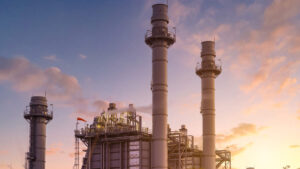Got Gas: LNG still has a role to play but challenges abound

LNG is sailing ahead but is it about to enter rougher waters? Pic: Getty Images
LNG has had a rough year in 2020 but there are indications that things might be looking up for the supercooled gas, one of the biggest exports in Australia.
While relations between Australia and China remain tense, the world’s most populous country has committed to achieving a peak in carbon dioxide emissions before 2030 and becoming carbon neutral by 2060.
Gas is expected to play a big part in this by displacing coal, though implementation of this has fallen behind targets to date with S&P Global Platts noting that it accounts for just 6 per cent of China’s energy mix, well short of the 8.3 per cent to 10 per cent target in the last Five Year Plan.
However, plans are already afoot to vastly increase its LNG import capacity, and national offshore oil and gas producer CNOOC Ltd has flagged plans for natural gas to make up half of its total output by 2035, up from the current 21 per cent.
This will involve the acceleration of natural gas exploration and production in China and overseas, a clear sign that the big gas transition is still underway.
There is little doubt that this comes as welcome news for LNG supplies in Australia and elsewhere, who have had to contend with reduced prices in 2020 due to low oil prices throughout most of the year.
But it may not all be good news for our local exporters.
Qater Petroleum, already one of the world’s largest LNG producers with capacity of about 77 million tonnes per annum (MMtpa), has green lighted the $US28.75bn ($37.2bn) North Field East project that will add another 32MMtpa to its LNG production capacity.
Consultancy Wood Mackenzie notes that with some of Qatar’s long-term contracts expiring, the country is going increasingly long on value.
To top it off, Qatar has also approved the construction of a carbon capture and storage facility to mitigate its carbon emissions.
So what does this mean for local LNG players?
Quite simply that they will have a window in which to enjoy a possibly better price environment for gas before one of their biggest competitors floods the market.
While this may come at a time when demand from China increases, it may well prove to be the death blow for the approval of any new projects or expansions as new or existing but undeveloped gas resources are used to extend the life of existing projects.
Hydrogen benefitting
The likely growth of gas demand in the near and immediate term could also benefit hydrogen.
Research has indicated that current natural gas pipelines can carry a blend of natural gas and hydrogen (up to about 15 per cent hydrogen) with only modest modifications, an important consideration given the potential for the green gas to embrittle steel pipelines and welds.
While this could prevent the use of existing natural gas pipelines to deliver pure hydrogen, it could offer a stopgap measure that will reduce emissions while a more permanent solution is developed.
Kawasaki Heavy Industries has already developed a liquefied hydrogen carrier that is expected to start taking trial deliveries from Australia to Japan in the first half of this year while plans have also been developed to convert hydrogen into ammonia to ease transportation.
Related Topics

UNLOCK INSIGHTS
Discover the untold stories of emerging ASX stocks.
Daily news and expert analysis, it's free to subscribe.
By proceeding, you confirm you understand that we handle personal information in accordance with our Privacy Policy.








